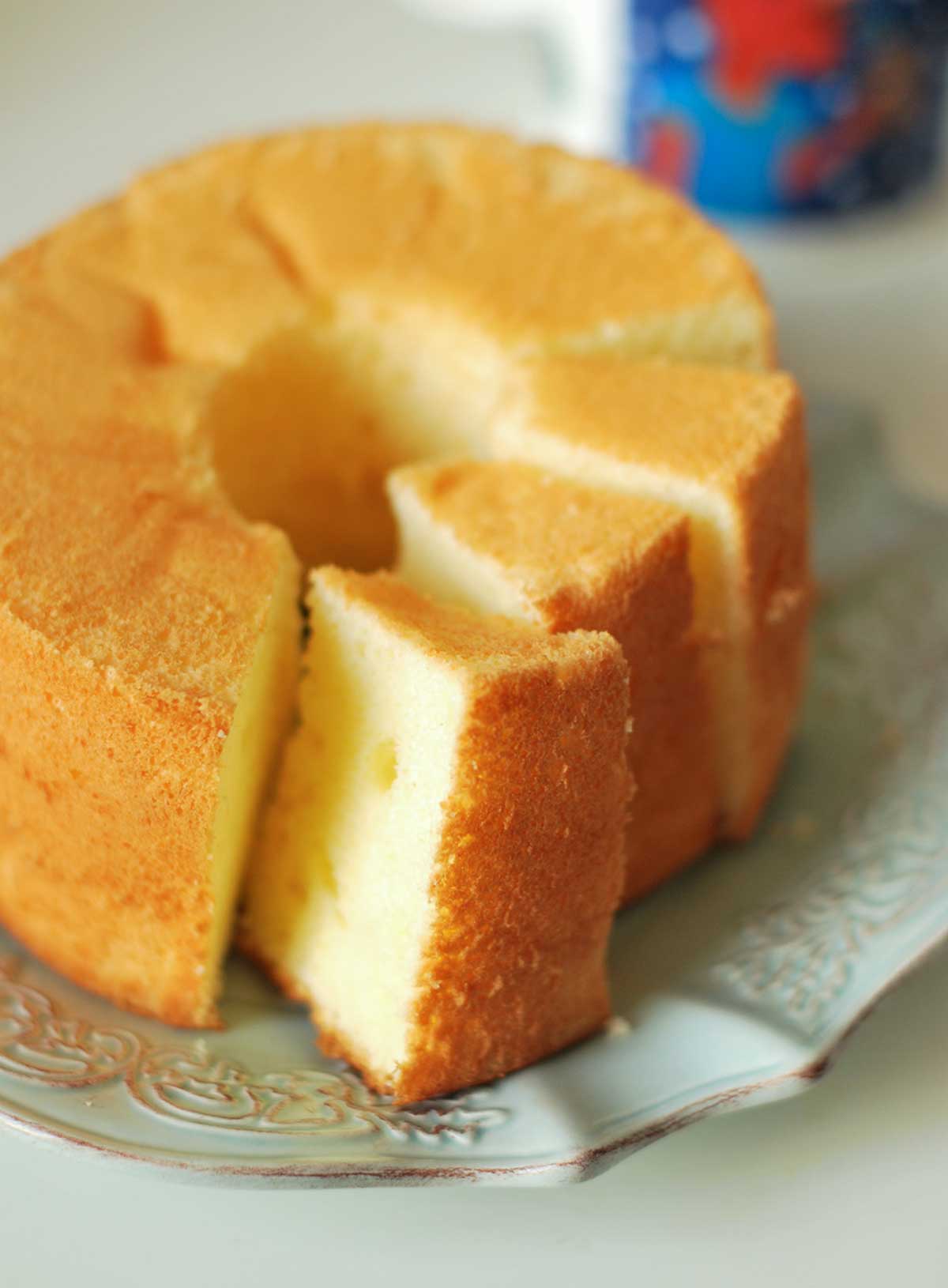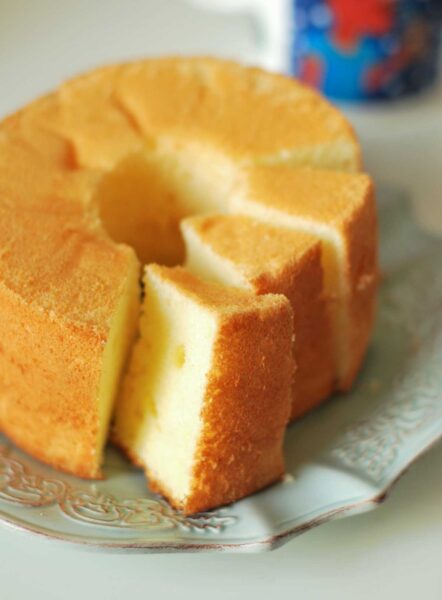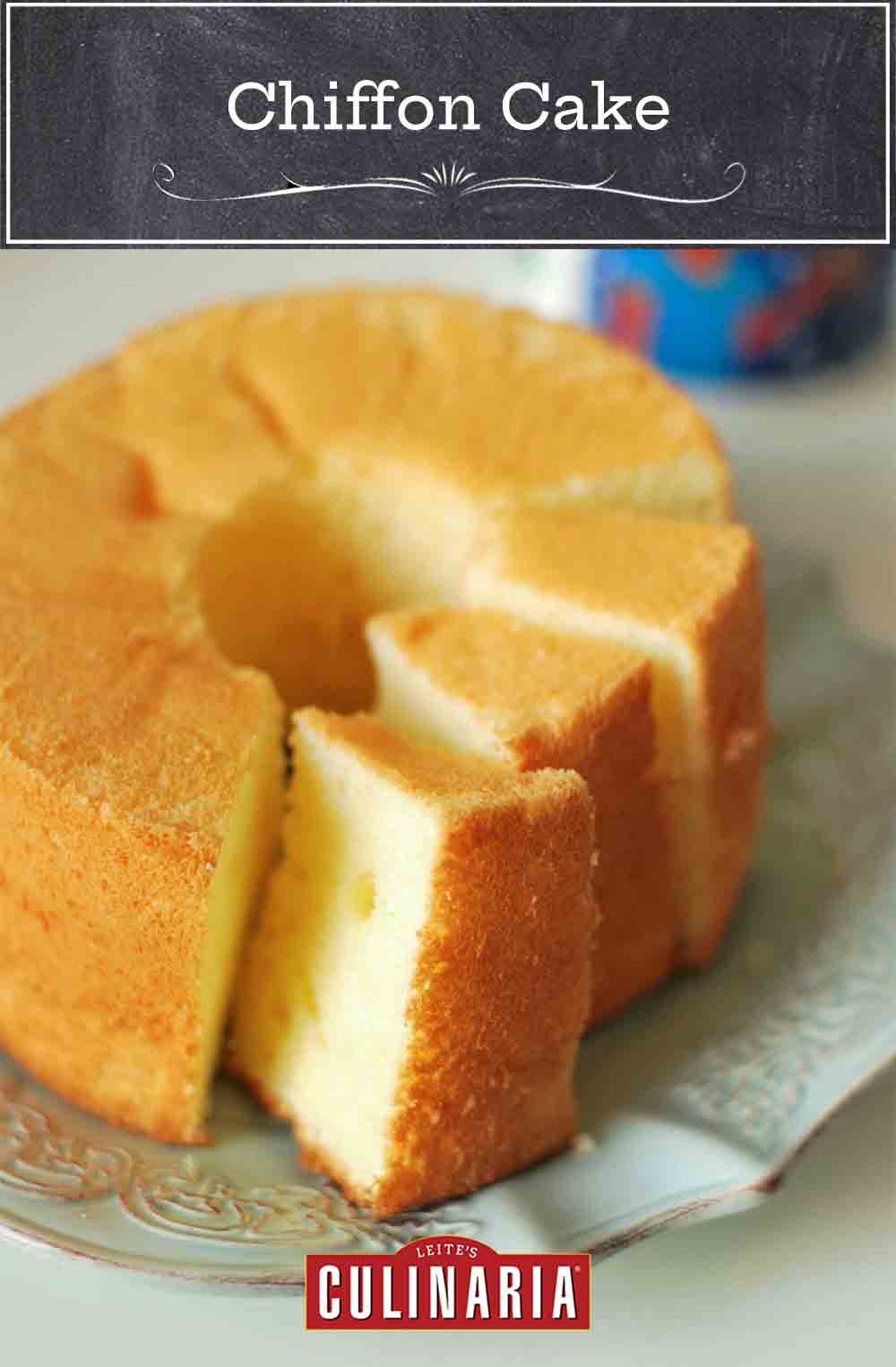
Can I frost this chiffon cake?
We find this chiffon cake to be sufficiently lovely to devour it nude—that is to say, sans icing—though if you really need to cover it up, try your fave confectioners’ sugar icing or the simple lemon glaze mentioned in our Recipe Tester’s comment beneath the recipe.

Chiffon Cake
Ingredients
- 2 1/4 cups sifted cake flour
- 1 1/2 cups granulated sugar
- 1 tablespoon baking powder
- 1 teaspoon salt
- 5 large egg yolks
- 3/4 cup water
- 1/2 cup vegetable oil
- 1 teaspoon grated lemon zest
- 1 teaspoon vanilla extract
- 8 large egg whites
- 1/2 teaspoon cream of tartar
Instructions
- Preheat the oven to 325°F (160°C).
- In a large bowl, stir together the cake flour, 1 1/4 cups sugar, baking powder, and salt.
- In another bowl with a stand mixer fitted with the whisk attachment on high speed, beat the egg yolks, water, oil, lemon zest, and vanilla until smooth, about 1 minute. Stir this into the flour mixture and keep stirring until the batter is smooth.
- In a third bowl with the stand mixer on medium speed and with clean beaters, beat the egg whites and cream of tartar until soft peaks form, 2 1/2 to 5 minutes.
- Gradually add the remaining 1/4 cup sugar, switch to high speed, and beat until stiff but not dry peaks form, about 5 minutes.
- Using a rubber spatula, gently fold 1/4 of the beaten egg whites into the batter to lighten it. Then gently fold in the remaining whites. Carefully scrape the batter into an unbuttered 10-inch tube pan with a removable bottom and use the spatula to smooth the surface. Bake the cake until the top springs back when lightly pressed and a cake tester, toothpick, or strand of spaghetti inserted in the center comes out clean, 60 to 75 minutes.
- Turn the pan with the cake upside down, propping the tube of the pan on a long slender bottle or resting the pan on four short glasses. Let the cake cool in the pan for 1 1/2 hours.
- To unmold the cake, slide a thin, long-bladed knife around the cake to detach it from the sides and center tube of the pan, pressing the knife against the pan to avoid tearing the cake. Then gently pull the tube upward. The cake should release from the sides of the pan. Slide the knife under the cake to gently detach it from the bottom. Place a wire cooling rack or a plate over the top of the cake pan, turn the cake pan and rack or plate upside down, and place the cake on the rack or plate. Turn the cake right side up and place it on a rack to cool completely.
- Slice, sever, and sigh in bliss. Originally published April 21, 1997.

Explore More with AI
Nutrition
Nutrition information is automatically calculated, so should only be used as an approximation.
Recipe Testers’ Reviews
I was so pleasantly surprised with this chiffon cake! It’s light and moist and lemony and disappeared in no time. In fact, my son has requested it again and wanted to make sure I have enough ingredients to continue making it weekly.
You definitely need to run a thin knife around all the sides, center, and bottom of the cake to fully remove it from the tube pan.
I wanted a lemon icing that was also dairy-free, like the cake. I mixed 2 cups confectioners sugar with 1/4 cup lemon juice and it was easy and equally as pleasing in taste. It was also immediately pourable.











Looks delicious and so fluffy!
Wait’ll you taste it, Natalie!
This cake looks amazing. I want to try it but got confused one step 1 and 3. In step 1 you add the sugar with the flour. And in step 3 you add sugar also in the egg whites. Do I use half of the sugar with the flour and the remaining with the egg whites
Ehab, thanks for asking for clarification. This is an older recipe that precedes all of us currently on staff, so I apologize for the confusing instructions. If you look at the ingredients list, sugar is listed twice. The first is just after the cake flour, and it calls for 1 1/4 cups, which is what you use in step 1. The second time sugar is listed in the ingredient list is after the cream of tartar, and that’s what you use in step 3. Kindly let us know what you think of the cake!
Exactly. Add 1cup sugar in 1st step. And Just save a quarter cup of sugar for beating egg whites
Thanks Shahina!
I adore cakes, but this is truly my favorite.